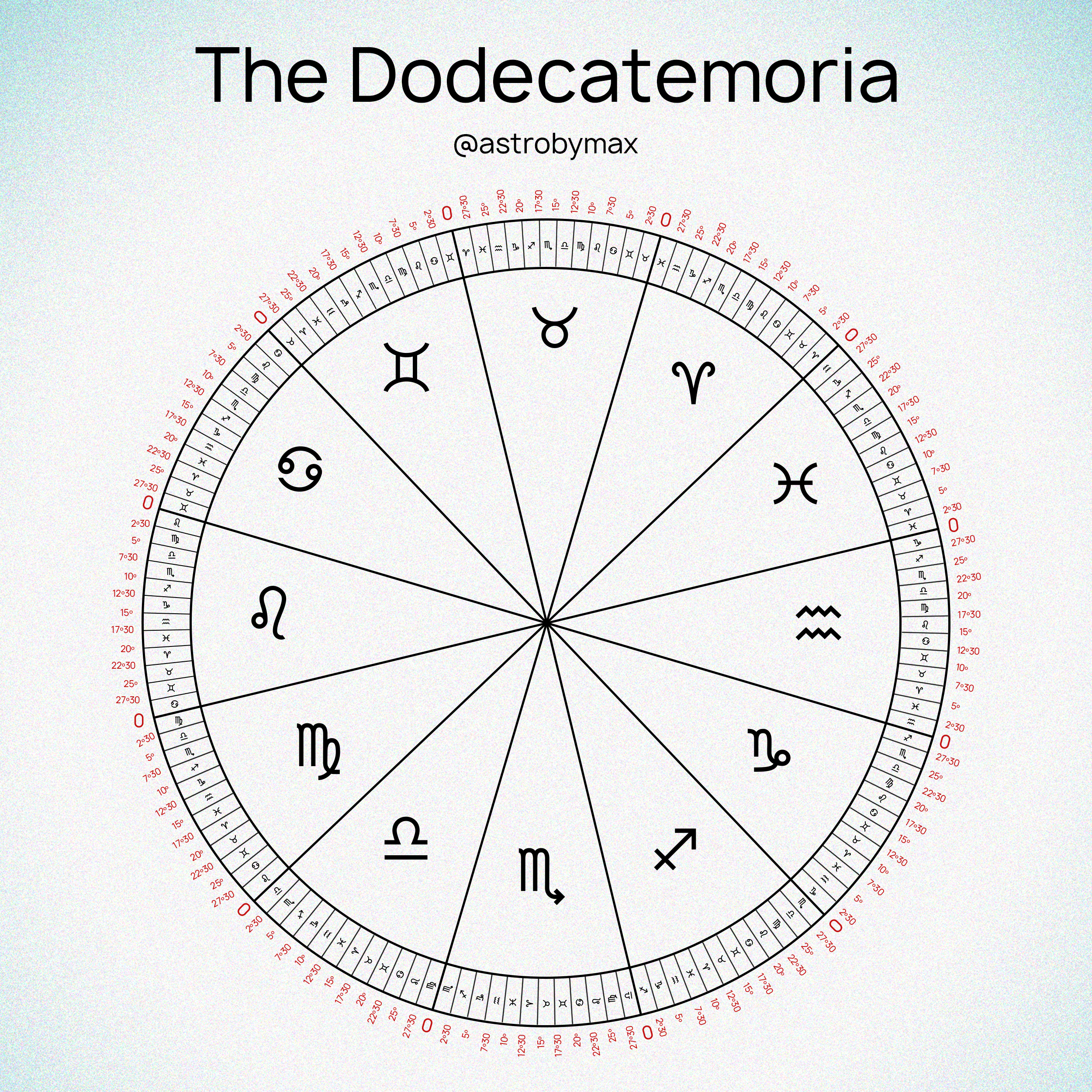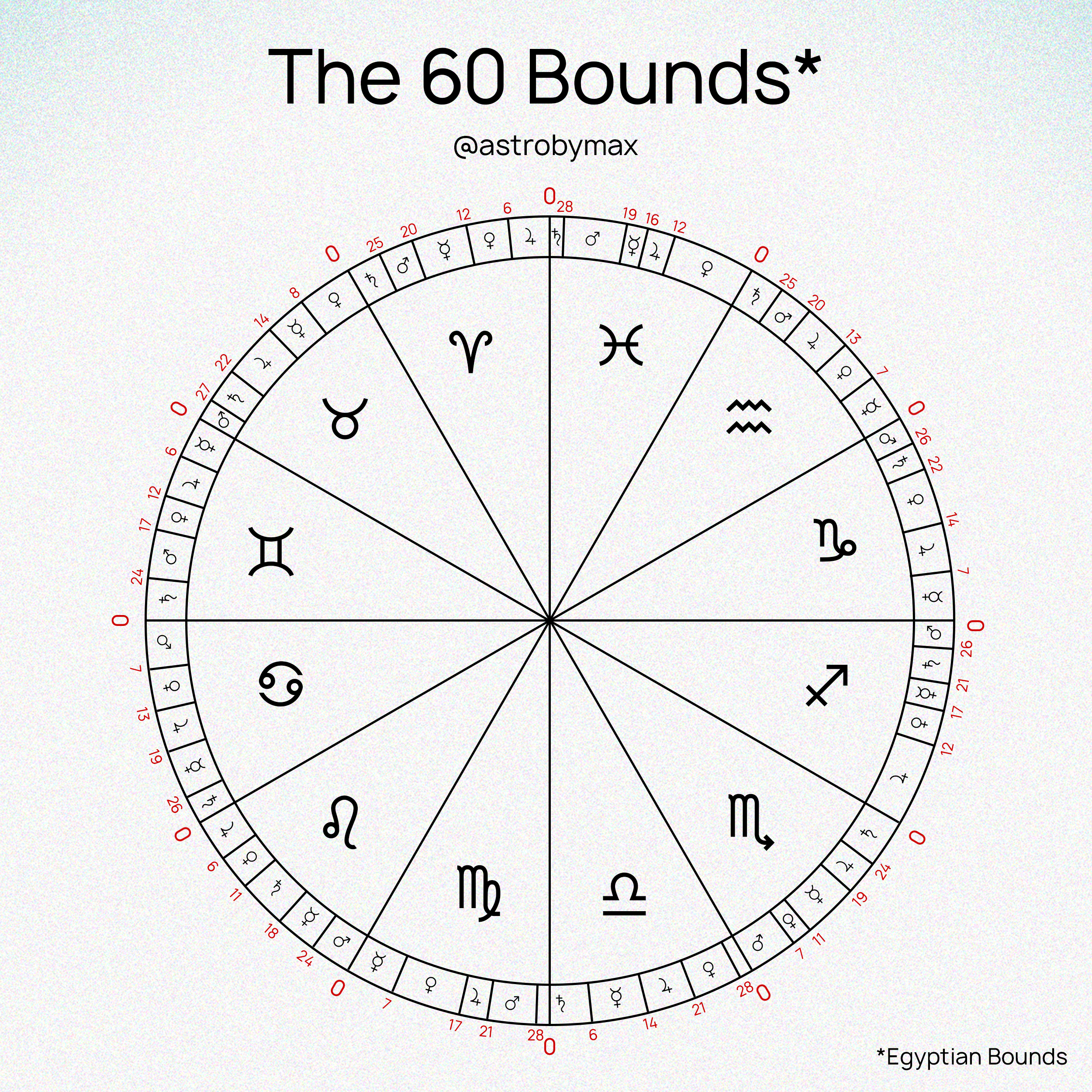Wheels of Reference
Hello everyone! I wanted to post some reference wheels I’ve made to help visualize certain concepts of dignity in astrology, and how each zodiac sign is broken up. These wheels showcase the rulerships of the Decans, Dodecatemoria, and the 50 Egyptian Bounds.
Decans: The Decans are a 3 fold division of each zodiac sign into 10º sections, adding to a total of 36 Decans in the entire zodiac. The Decans have rich lineage and history and Austin Coppock does a great job at exploring these decans in his NORWAC 2020 workshop, and also in his book, 36 Faces. There are two systems for calculating these decans, known as the Chaldean Order Method, and the Triplicity Method. For the Chaldean Order, we assign each decan a planetary ruler based on the next planet in the Chaldean Order (the speed of the planets). We start with the first decan of Aries with Mars, then the Sun, then Venus, crossing over into Taurus, Mercury, Moon, and then it loops back to Saturn. Whereas in the Triplicity Method, the rulers of the signs in that same elemental triplicity become rulers. In Aries, Mars rules Aries so it gets the first Decan, the Sun rules Leo so it gets the second decan, and Jupiter rules Sagittarius, so it gets the final decan of Aries. The Decans have often been associated with spirits, constellations in the sky, and other lore, but the planetary rulers are what I have demonstrated here today.
Dodecatemoria: The Dodecatemoria is when we take the zodiac, already broken into 12 signs of 30º, and then we take each zodiac sign comprised of 30º, and split it up into 12 equal parts, spanning 2º30 each, fitting an entire micro-zodiac within one zodiac sign. The Dodecatemoria are referred to by several names, Dudodecatemoria, 12th Parts, Dwadasamsa in the Vedic Tradition, but they all refer to this division, and almost every author in the ancient Hellenistic and Medeavil Islamic text mentions their importance. Firmicus Maternus tells us that "Some people think that from these, the whole essence of a chart can be found and they claim that whatever is hidden in the chart and be revealed by the duodecatemoria." - Maternus, Mathesis, 2.13. Abu Ma’shar lists out interpretations for the Ascendant in the dodecatemoria of each zodiac sign, translated by Ali A Olomi on his Patreon.
Bounds: Bounds or Terms are divisions of each zodiac sign that break it up into 5 unequal sections (creating 60 in total), ruled by one of the 5 planets: Mercury, Venus, Mars, Jupiter, & Saturn. Their origins are obscure, due to the fragmentation and decay of the ancient texts that the surviving text that are available to us are drawing on. There are usually two sets of bounds that Astrologers use: Ptolemy’s Bounds, which aren’t actually Ptolemy’s bounds, but they’re just the bounds he found in a book, as well as the Egyptian Bounds, which are the oldest bound system known, and used by more authors, Abu Ma’shar says in his Great Introduction that the Egyptian bounds are “more correct”. I personally stay away from using Ptolemy’s bounds because it doesn’t seem like it was of the mainstream thought, and there is no rationale behind these modifications, while the Egyptian Bounds were more frequently used by ancient astrologers. Granted, there is no rationale for EITHER of them, however, the popularization seems to be the only factor we can draw on to discern our judgment for which system might be better to use with the bounds, but I invite folks to experiment with both systems.
The terms are primarily used in Horary and even Electional work, but I personally use them in all the above, and Natal + Predictive work. One of the original uses for the bounds was in the timing technique Primary Directions, and the direction of the Ascendant through the Bounds would show which planet becomes the Lord of the Period, and has influence over matters dealing with (in this case) the Ascendent, but you could theoretically direct from any point in the chart. I recommend using software like Morinus for Primary Directions.


